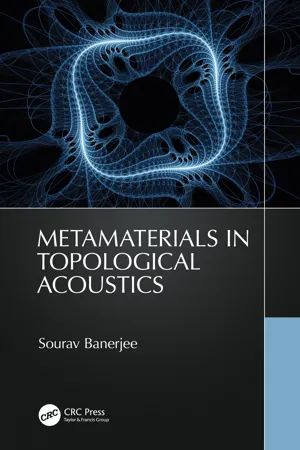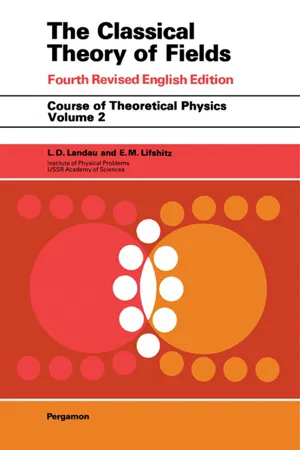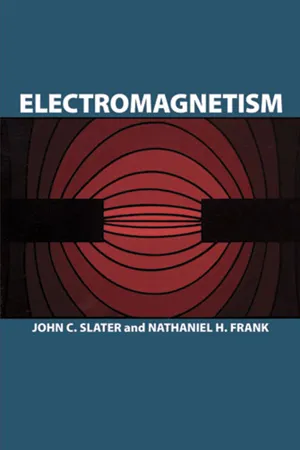Physics
Local Field
In physics, a local field refers to a physical quantity, such as an electric or magnetic field, that exists at a specific point in space and time. It is characterized by its strength and direction at that particular location. Local fields play a crucial role in describing the interactions and behavior of particles and objects within a given region.
Written by Perlego with AI-assistance
Related key terms
Related key terms
1 of 4
Related key terms
1 of 3
4 Key excerpts on "Local Field"
- eBook - ePub
- Sourav Banerjee(Author)
- 2023(Publication Date)
- CRC Press(Publisher)
Fig. 4.1 .FIGURE 4.1A few example of fields as written below the respective figures.Like classical mechanics, quantum mechanics (discussed in the next chapter) also uses the concept of fields. Quantization of classical electrodynamics or quantum electrodynamics [4 ] uses the concept of quantum fields. The same is true for quantum chromodynamics [5 ]. A quantum field is comparatively a modern concept in quantum mechanics due to the recognition of the presence of angular momentum and energy of the electromagnetic field.Field theory is a theory to describe the field within a physical framework. How a field can dynamically change (spatially or spatio-temporally) due to the internal or external physical effects is generally described under the framework of a field theory. A field quantity, or the dependent variable, changes in space and time with respect to the internal independent physical quantities. Irrespective of a classical or quantum mechanical system, the physical phenomena related to fields are predictable by writing the Lagrangian function or the Hamiltonian principle of the system (refer to Chapter 2 ) and treating them with an infinite number of degrees of freedom. This will result a field theory. The resulting field theories are referred to as classical or quantum field theories. A theory is a set of rules, laws, and processes that predictively describe the dynamics of a field. Hence, field and field theories are mutually inclusive in physics.4.2 ELECTRIC AND MAGNETIC FIELDS
Current through a wire is essentially the rate of flow of charges through the wire. In 1820 Danish physicist Hans Christian Øersted [1 , 2 ] discovered that an electric current flowing through a wire caused deflection of the needle of a compass next to a wire carrying a current. The deflection was highest when the needle was perpendicular to the wire. He concluded that when current flows through a wire, the rate of change of charges causes a magnetic field (H ) to develop around the wire. Later, Andre-Marie Ampere in 1826 [1 , 3 ] quantified the magnetic field generated by a wire carrying an electric current, experimentally observed by Øersted. Alternatively, if an electrical wire is moved with a certain velocity near a magnet, the wire starts to carry current due to the induction. This signifies that if the magnetic field is changed over time, the rate of change of the magnetic field can cause generation of electric field in a conductive wire. This phenomenon was first reported by Faraday in 1831 conducting an experiment with a metal ring with two independent wires wrapped around on either side. This was an ingenious idea, which changed the course of physics in a completely new direction, giving birth to electromagnetism. The induction phenomenon was also independently discovered by Joseph Henry in 1832 [2 ]. Please note that the concept of mutual interaction between electric and magnetic fields came much later, in 1849, at which time it was rejected. The concept of field by Faraday was resurrected by James Clerk Maxwell in 1861 [2 ] giving proper mathematical framework using Oliver Heaviside’s [2 - eBook - ePub
- L D Landau(Author)
- 2013(Publication Date)
- Pergamon(Publisher)
field of force. Namely, instead of saying that one particle acts on another, we may say that the particle creates a field around itself; a certain force then acts on every other particle located in this field. In classical mechanics, the field is merely a mode of description of the physical phenomenon—the interaction of particles. In the theory of relativity, because of the finite velocity of propagation of interactions, the situation is changed fundamentally. The forces acting on a particle at a given moment are not determined by the positions at that same moment. A change in the position of one of the particles influences other particles only after the lapse of a certain time interval. This means that the field itself acquires physical reality. We cannot speak of a direct interaction of particles located at a distance from one another. Interactions can occur at any one moment only between neighboring points in space (contact interaction). Therefore we must speak of the interaction of the one particle with the field, and of the subsequent interaction of the field with the second particle.We shall consider two types of fields, gravitational and electromagnetic. The study of gravitational fields is left to Chapters 10 to 14 and in the other chapters we consider only electromagnetic fields.Before considering the interactions of particles with the electromagnetic field, we shall make some remarks concerning the concept of a “particle” in relativistic mechanics.In classical mechanics one can introduce the concept of a rigid body, i.e., a body which is not deformable under any conditions. In the theory of relativity it should follow similarly that we would consider as rigid those bodies whose dimensions all remain unchanged in the reference system in which they are at rest. However, it is easy to see that the theory of relativity makes the existence of rigid bodies impossible in general.Consider, for example, a circular disk rotating around its axis, and let us assume that it is rigid. A reference frame fixed in the disk is clearly not inertial. It is possible, however, to introduce for each of the infinitesimal elements of the disk an inertial system in which this element would be at rest at the moment; for different elements of the disk, having different velocities, these systems will, of course, also be different. Let us consider a series of line elements, lying along a particular radius vector. Because of the rigidity of the disk, the length of each of these segments (in the corresponding inertial system of reference) will be the same as it was when the disk was at rest. This same length would be measured by an observer at rest, past whom this radius swings at the given moment, since each of its segments is perpendicular to its velocity and consequently a Lorentz contraction does not occur. Therefore the total length of the radius as measured by the observer at rest, being the sum of its segments, will be the same as when the disk was at rest. On the other hand, the length of each element of the circumference of the disk, passing by the observer at rest at a given moment, undergoes a Lorentz contraction, so that the length of the whole circumference (measured by the observer at rest as the sum of the lengths of its various segments) turns out to be smaller than the length of the circumference of the disk at rest. Thus we arrive at the result that due to the rotation of the disk, the ratio of circumference to radius (as measured by an observer at rest) must change, and not remain equal to 2π. The absurdity of this result shows that actually the disk cannot be rigid, and that in rotation it must necessarily undergo some complex deformation depending on the elastic properties of the material of the disk. - eBook - ePub
Human Exposure to Electromagnetic Fields
From Extremely Low Frequency (ELF) to Radiofrequency
- Patrick Staebler(Author)
- 2017(Publication Date)
- Wiley-ISTE(Publisher)
1 Concepts of Electromagnetic FieldsElectromagnetic fields are produced from natural and artificial sources. We distinguish between electric, magnetic and electromagnetic fields. Whether static or variable in time, they each have physical properties that produce specific interactions with biological organisms: plant, animal and human.To provide a better understanding of the interaction mechanisms, the concepts of electromagnetism and the associated terminology are presented in this chapter [FEY 15].1.1. Concepts of fields
1.1.1. Introduction
In physics, a field can be defined as an area of influence. We are immersed in the Earth’s gravitational field (the area within which the Earth attracts objects) and in electromagnetic fields (areas within which we can pick up television broadcasts and mobile phone signals, for example).Gravity acts between two bodies that have a mass, while an electric field acts on positive or negative electric charges (electric charge is a fundamental property of matter, along with mass). These interactions are due to forces whose intensity is proportional to the mass of the objects or to the value of the electric charges. They decrease with the square of the distance that separates them and cancel each other out ad infinitum. The expression of these forces is identical. Their intensity in Newton (N) is given, respectively, by the law of gravitation and by Coulomb’s law (in classical physics):- – law of gravitation between two masses m1 and m2 :
[1.1a ]- – Coulomb’s law between two electric charges q1 and q2 :
[1.1b ]where d is the distance in meters between the two objects, G is the universal gravitational constant, and:Coulomb’s constant (N·m2 ·C–2 ), and “c” is the speed of light (≈ 3 × 10+8 m·s–1 ). εois a constant that will be introduced later on. If we refer to the Earth, FG1/2represents the weight and [1.1a] becomes simply P = m·g with g = 9.81 m·s–2 - eBook - ePub
- John C. Slater, Nathaniel H. Frank(Authors)
- 2012(Publication Date)
- Dover Publications(Publisher)
Probably part of the trouble with these theories is the fact that new phenomena are appearing as we go to very rapid particles of very high energy, which complicate the whole theory. These are the phenomena of the forces between the particles, neutrons and protons, in the nucleus. There is good evidence that these forces are not electromagnetic, but of another variety, produced not by the electromagnetic field, but by a meson field. This field has been described mathematically by analogy with electromagnetic theory. It similarly has a wave aspect, but also a corpuscular aspect, the corpuscles in this case being mesons, rather than photons. It is thus becoming likely that there exist in nature a number of different levels of forces and particles: the electromagnetic field and the photons, the electrons and protons and neutrons and their associated fields of the de Broglie or Schrödinger type, and the mesons and their fields. And the guiding pattern for the development of all these theories is at present the electromagnetic theory in its classical form. It remains to be seen what final synthesis of these various theories can eventually be made.We are now ready to proceed with our study of classical electromagnetic theory, which alone we shall take up in this volume. We start in the historical order, treating electrostatics, first from the basis of Coulomb’s law, then from the standpoint of field theory, showing as Faraday did how much that helps us in the study of problems involving dielectrics and conductors. Then we take up in a similar way the magnetic field, passing on through the study of electromagnetic induction to Maxwell’s equations, and to their application to the electromagnetic theory of light and of other electromagnetic radiation fields.1. The Force on a Charge. —Electromagnetic theory deals with the forces acting on charges and currents. We find that an electric charge at a given point of space is acted on by two types of force: an electric force, independent of its velocity, and a magnetic force, proportional to its velocity (that is, to the current carried by the charge), and at right angles to its velocity. We find that different charges at the same point of space are acted on by different amounts of force, and we arbitrarily define the strength of the charge as being proportional to the magnitude of force acting on it in a given field. We shall see later how to define the unit of charge, the coulomb. We can define two vectors at every point of space, E the electric intensity, B the magnetic induction, such that the force F on a charge of q coulombs moving with velocity v
Index pages curate the most relevant extracts from our library of academic textbooks. They’ve been created using an in-house natural language model (NLM), each adding context and meaning to key research topics.
Explore more topic indexes
Explore more topic indexes
1 of 6
Explore more topic indexes
1 of 4



